Home>Furniture>Bedroom Furniture>Why You Shouldn’t Wear Socks To Bed
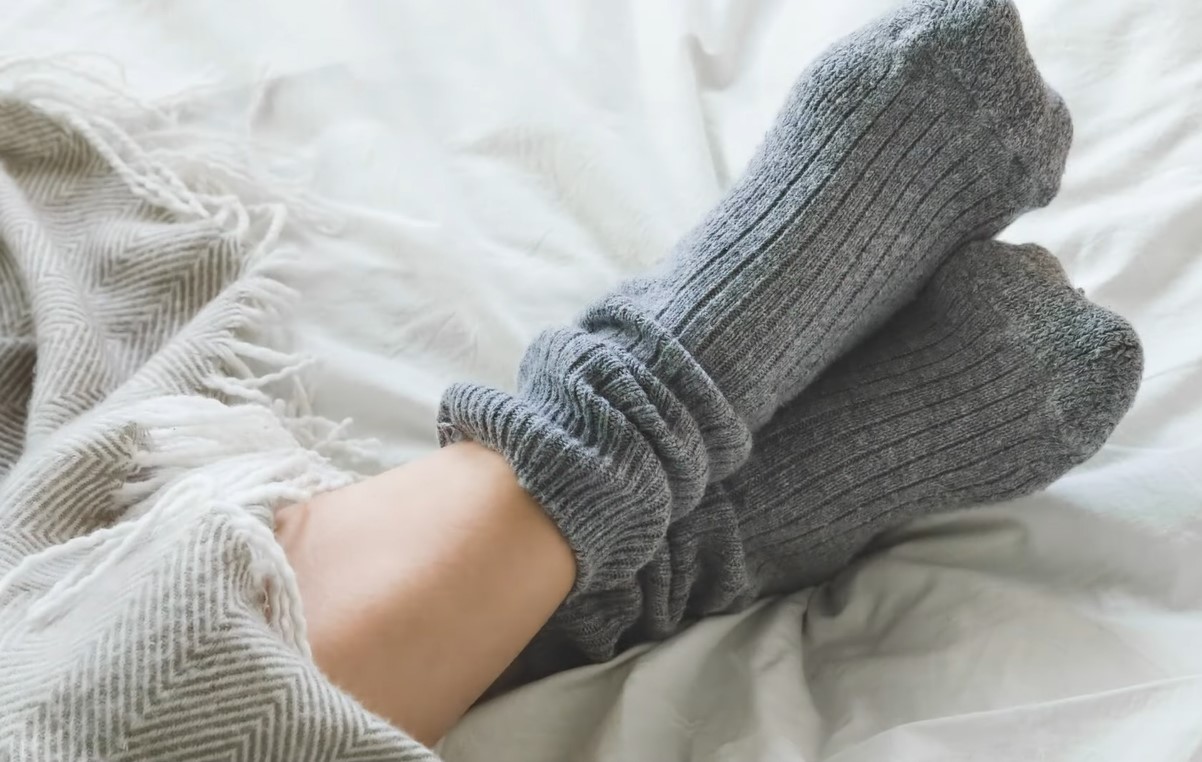

Bedroom Furniture
Why You Shouldn’t Wear Socks To Bed
Modified: October 20, 2024
Discover the reasons why wearing socks to bed may not be the best idea. Create a cozy and comfortable sleep environment with our selection of bedroom furniture.
(Many of the links in this article redirect to a specific reviewed product. Your purchase of these products through affiliate links helps to generate commission for Storables.com, at no extra cost. Learn more)
Introduction
Welcome to the fascinating world of bedroom furniture! Your bedroom is your sanctuary, where you retreat after a long day to relax and recharge. And one essential piece of furniture in your bedroom is the bed itself. We spend approximately one-third of our lives in bed, so it’s crucial to create a comfortable and inviting environment.
When it comes to optimizing your sleep, every small detail matters, including what you wear to bed. One debate that often arises is whether it’s beneficial or detrimental to wear socks while sleeping. Some people swear by the cozy comfort of slipping on a pair of socks before bed, while others prefer the freedom of going without them.
In this article, we will explore the arguments for and against wearing socks to bed, examining the potential benefits and risks. Whether you’re a dedicated sock-wearer or undecided on this matter, by the end of this article, you will be equipped with the information you need to make an informed decision about whether or not to wear socks to bed.
Key Takeaways:
- Wearing socks to bed can improve circulation, enhance sleep quality, regulate body temperature, and prevent dry feet, especially in colder climates or for individuals with poor circulation.
- However, it may disrupt the natural sleep cycle, increase the risk of fungal infections, and restrict foot breathing, so consider individual comfort and foot health when deciding whether to wear socks to bed.
Read more: What To Wear In Tanning Bed
Benefits of wearing socks to bed
While some may find the idea of wearing socks to bed uncomfortable or unnecessary, there are actually several potential benefits to slipping on a pair before hitting the hay. Let’s take a closer look at some of these advantages:
- Improved circulation: Wearing socks to bed can help promote better blood flow. Socks act as a gentle compression, keeping the blood vessels in your feet dilated and facilitating the movement of blood back up to your heart. This can be particularly beneficial for individuals who struggle with poor circulation, as it helps to prevent cold feet and reduce the risk of conditions like Raynaud’s disease.
- Enhanced sleep quality: The science behind sleep suggests that our body temperature plays a vital role in regulating our sleep-wake cycle. Wearing socks to bed can help keep your feet warm, which in turn helps to dilate your blood vessels and signal to your brain that it’s time to sleep. By promoting a more comfortable body temperature, wearing socks to bed may improve the duration and quality of your sleep.
- Regulation of body temperature: For individuals who struggle with maintaining a consistent body temperature at night, wearing socks can provide an additional layer of insulation. If you find yourself waking up feeling too hot or too cold, slipping on a pair of socks can help regulate your body temperature and keep you comfortable throughout the night.
- Prevention of dry and cracked feet: The skin on our feet is prone to dryness, especially during colder months or in drier climates. Wearing socks to bed can help lock in moisture and prevent excessive dryness, reducing the risk of developing cracked or painful feet. For those who struggle with conditions like eczema or psoriasis, wearing socks can provide an extra layer of protection and prevent flare-ups.
These benefits of wearing socks to bed are particularly relevant for individuals who tend to have cold feet, live in colder climates, or are prone to poor circulation. However, it’s important to remember that individual preferences and comfort levels may vary. It’s always recommended to listen to your body and make decisions based on what feels best for you.
Improved circulation
One of the significant benefits of wearing socks to bed is the potential improvement in circulation. Good blood circulation is vital for overall health and well-being, and it plays an important role in maintaining optimal body temperature.
When you wear socks to bed, they act as a gentle compression that helps keep the blood vessels in your feet dilated. This, in turn, promotes better blood flow back up to your heart. For individuals with poor circulation, this can be particularly beneficial as it helps prevent cold feet and reduces the risk of conditions like Raynaud’s disease.
Raynaud’s disease is a condition characterized by a temporary interruption of blood flow to the extremities, typically triggered by exposure to cold temperatures or stress. People with this condition experience a numbing sensation, discoloration of the fingers or toes, and may even develop painful ulcers or sores. Wearing socks to bed can help maintain warmth in the feet, reducing the frequency and severity of Raynaud’s episodes.
In addition to preventing conditions like Raynaud’s disease, improved circulation can also have a positive impact on your overall health. Proper blood flow delivers oxygen and nutrients to your body’s tissues, helps remove waste products, and supports a healthy immune system.
Individuals who suffer from diabetes or peripheral artery disease (PAD) can particularly benefit from wearing socks to bed. Both of these conditions can cause poor circulation in the extremities, leading to complications such as foot ulcers and infections. Wearing socks to bed can help maintain constant warmth and promote blood flow, reducing the risk of these complications.
It’s important to note that while wearing socks can improve circulation, it’s essential to choose socks that are not too tight or constricting. Opt for socks made from breathable materials that provide a comfortable fit without limiting blood flow. Compression socks may also be beneficial for individuals with more severe circulation issues or specific medical conditions, but it’s best to consult with a healthcare professional for personalized advice.
By promoting better blood flow and preventing conditions related to poor circulation, wearing socks to bed can contribute to better overall health and comfort, particularly for individuals with specific circulation concerns.
Enhanced sleep quality
When it comes to getting a good night’s sleep, several factors come into play, one of which is maintaining the right body temperature. Wearing socks to bed can actually contribute to enhanced sleep quality by helping to regulate body temperature.
Our body temperature naturally decreases as we sleep, reaching its lowest point in the early morning hours. This drop in temperature signals to our brain that it’s time to rest and facilitates the transition into a deep and restful sleep. However, some individuals may struggle with maintaining a comfortable body temperature throughout the night, leading to disruptions in sleep.
Wearing socks to bed can be beneficial for those who tend to have cold feet or struggle to keep their feet warm at night. Socks act as a layer of insulation, helping to trap the heat around the feet and prevent them from becoming too cold. By keeping the feet warm, socks can help dilate the blood vessels in the feet, signaling to the brain that it’s time to sleep.
This increase in foot temperature can have a direct impact on sleep quality. When your feet are warm, your body is more likely to relax and transition into a state of deep sleep. Additionally, keeping the feet warm can also help reduce the chances of waking up throughout the night due to discomfort caused by cold feet.
However, it’s important to strike a balance and avoid overheating. Wearing socks that are too thick or made from non-breathable materials can cause the feet to become excessively warm, leading to discomfort and potentially disrupting sleep. Opt for socks made from breathable materials, such as cotton or bamboo, that can provide insulation without trapping unwanted moisture or heat.
It’s worth noting that individual preferences may differ. Some people may find it more comfortable to sleep with bare feet or without socks, especially in warmer climates or during the summer months. Experiment with different sleepwear options to find what works best for you and promotes optimal sleep quality.
By helping to regulate body temperature and keeping the feet warm, wearing socks to bed can contribute to enhanced sleep quality, leading to a more restful and rejuvenating night’s rest.
Regulation of body temperature
Have you ever woken up in the middle of the night feeling uncomfortably hot or cold? Maintaining a consistent body temperature throughout the night is crucial for quality sleep, and wearing socks to bed can help regulate body temperature and improve overall comfort.
Our body temperature naturally fluctuates throughout the day and night, with the lowest point typically occurring during the early morning hours. During sleep, it’s important to promote a stable and comfortable body temperature to support optimal rest. Wearing socks to bed can provide an additional layer of insulation that helps regulate body temperature and keep your feet comfortably warm.
In cooler environments or during the colder months, having warm feet can be especially beneficial. By trapping heat around your feet, socks act as a barrier against the cold and prevent heat loss from the extremities. This can help maintain a comfortable overall body temperature, allowing you to sleep more peacefully without interruptions caused by feeling too cold.
On the other hand, if you tend to get hot during sleep or live in warmer climates, you might be concerned about wearing socks and adding extra heat. In such cases, it’s important to choose socks made from breathable materials like cotton or bamboo, which allow air circulation and prevent excessive sweating. These types of socks can help regulate foot temperature, preventing your feet from becoming overly hot and uncomfortable.
Remember that the optimal bedroom temperature for sleep usually falls between 60 and 67 degrees Fahrenheit (15 to 19 degrees Celsius). Wearing socks to bed can contribute to maintaining a comfortable body temperature within this range, promoting a more restful and uninterrupted sleep.
It’s important to listen to your body and experiment with different sleepwear options to find what works best for you. If you find that wearing socks to bed is causing discomfort or making you feel too hot, it’s perfectly fine to adjust your sleepwear accordingly. The goal is to find a comfortable balance that promotes healthy sleep and allows your body to regulate its temperature naturally.
By providing an extra layer of insulation and helping to regulate body temperature, wearing socks to bed can contribute to a more comfortable sleep environment, especially in colder conditions or for individuals who tend to have difficulty maintaining a stable body temperature during the night.
Prevention of dry and cracked feet
Do you struggle with dry and cracked feet, especially during the winter months or in dry climates? Wearing socks to bed can help prevent excessive dryness and provide much-needed moisture to the skin on your feet.
Our feet are prone to dryness due to factors like exposure to harsh weather conditions, wearing open-toe shoes, or spending long hours on our feet. Dry and cracked feet can be not only uncomfortable but also painful.
By wearing socks to bed, you create a barrier that helps lock in moisture and prevent excessive evaporation. When you apply moisturizer to your feet before bed and cover them with socks, it creates a warm and humid environment that allows the moisturizer to deeply penetrate the skin, providing hydration and nourishment.
Opt for socks made from breathable fabrics like cotton or moisture-wicking materials that can help absorb excess moisture and promote air circulation. Avoid socks made from synthetic materials that may trap moisture and lead to excessive sweating.
For individuals who struggle with conditions like eczema or psoriasis, wearing socks to bed can offer additional benefits. These skin conditions can cause dryness, itching, and inflammation on the feet, making them more prone to cracks and discomfort. By keeping the feet covered and moisturized overnight, socks can help alleviate these symptoms and provide relief.
Preventing dry and cracked feet not only improves comfort but also helps maintain the health of your feet. Cracked heels can create openings for bacteria to enter, leading to infections. By keeping your feet moisturized and protected with socks, you reduce the risk of developing painful cracks or infections.
Remember to regularly moisturize your feet and keep them clean and dry before putting on socks. This will help prevent the buildup of bacteria or fungus that can cause foot odor or infections. Choose socks that are clean and changed regularly to maintain good hygiene.
While wearing socks to bed can be beneficial for preventing dry and cracked feet, it’s also important to ensure that your feet have proper time to breathe and air out. During the day, allow your feet to breathe by wearing open-toe shoes or going barefoot when appropriate.
By providing moisture and protection, wearing socks to bed can help prevent dry and cracked feet, promoting overall foot health and comfort.
Wearing socks to bed can restrict blood flow and lead to overheating, disrupting your sleep. Opt for breathable, natural fibers to keep your feet warm without the negative effects.
Risks of wearing socks to bed
While there are potential benefits to wearing socks to bed, it’s important to consider the possible risks as well. Here are some factors to keep in mind:
- Disruption of natural sleep cycle: Wearing socks to bed can alter the natural temperature regulation process that occurs during sleep. Your body naturally cools down during the night, and wearing socks can potentially interfere with this cooling process, leading to discomfort and restlessness. If you tend to overheat easily or experience night sweats, wearing socks to bed may exacerbate these issues and disrupt your sleep cycle.
- Increased risk of fungal infections: Wearing socks for long periods, including during sleep, can create a warm and moist environment that is conducive to fungal growth. This can increase the risk of developing fungal infections such as athlete’s foot or toenail fungus. To minimize this risk, make sure to choose socks made from breathable materials, change them regularly, and keep your feet clean and dry to prevent the buildup of moisture and bacteria.
- Restricted foot breathing: Our skin needs to breathe to maintain its health. Wearing socks to bed can limit the airflow to your feet, potentially causing excessive sweating and trapping moisture. This can lead to discomfort, skin irritation, and the formation of blisters. To allow your feet to breathe, consider going sock-free or wearing loose-fitting socks made from breathable fabrics during sleep.
It’s important to note that the risks mentioned above may vary from person to person, depending on individual preferences, sensitivity, and overall foot health. Some people may find that wearing socks to bed doesn’t cause any issues, while others may experience discomfort or adverse effects. It’s essential to pay attention to how your body responds and adjust your sleepwear accordingly.
If you decide to wear socks to bed, choose socks made from natural fibers that allow for breathability, and avoid wearing tight or constricting socks. Additionally, practicing good foot hygiene, such as keeping your feet clean and dry, can help minimize the potential risks associated with wearing socks overnight.
Ultimately, the decision of whether to wear socks to bed depends on your personal comfort and preferences. It’s always a good idea to listen to your body and make choices that promote a restful and comfortable night’s sleep.
Disruption of natural sleep cycle
One of the potential risks of wearing socks to bed is the disruption of your natural sleep cycle. During sleep, our body goes through different stages, including periods of cooling down and warming up. Wearing socks to bed can interfere with this natural temperature regulation process and affect your overall sleep quality.
When we sleep, our body naturally cools down as part of the sleep-wake cycle. This drop in body temperature signals to the brain that it’s time for rest and promotes the transition into a deep and restorative sleep. However, wearing socks can impede this cooling process by trapping heat around the feet, causing discomfort and potentially leading to restlessness.
If you tend to overheat easily or experience night sweats, wearing socks to bed may exacerbate these issues and further disrupt your sleep. This can result in fragmented sleep patterns, frequent awakenings, and a diminished quality of sleep overall.
In addition, our feet have a high concentration of sweat glands, which can lead to increased perspiration during sleep. Wearing socks can restrict airflow and contribute to excessive sweating, making your feet damp and uncomfortable throughout the night. This, in turn, can further disrupt your sleep and create an environment that is conducive to bacterial or fungal growth.
If you prefer the comforting feeling of socks while you sleep but still want to avoid the risks associated with disrupting your natural sleep cycle, you may consider wearing loose-fitting socks made from breathable materials, such as cotton or bamboo. These types of socks allow for better air circulation and help regulate foot temperature without causing excessive heat buildup.
Ultimately, it’s important to listen to your body and pay attention to how wearing socks to bed affects your sleep. If you find that wearing socks leads to discomfort, restlessness, or disrupted sleep, it might be best to remove them or explore alternative sleepwear options that allow your feet to breathe and maintain a more natural temperature.
Remember, everyone’s sleep preferences and needs are different. By finding the sleepwear that suits you best, you can create a comfortable sleep environment and promote a healthy, uninterrupted sleep cycle.
Increased risk of fungal infections
While wearing socks to bed can provide warmth and comfort, it’s important to be aware of the potential risk of increased fungal infections. Wearing socks for extended periods of time, including during sleep, creates a warm and moist environment that can promote the growth of fungi.
Fungal infections such as athlete’s foot (tinea pedis) or toenail fungus (onychomycosis) are common foot conditions that can be caused by fungi thriving in warm and moist environments. Wearing socks to bed can contribute to this environment, as it can trap moisture and heat around the feet, creating an ideal breeding ground for fungal organisms.
To minimize the risk of developing fungal infections, it’s essential to choose socks made from breathable materials that allow for proper air circulation. Fabrics like cotton or bamboo are good options as they are more breathable and help wick away moisture from the skin. Avoid socks made from synthetic materials, as they tend to trap moisture and can create an environment where fungi can thrive.
In addition to choosing the right socks, practicing good foot hygiene is crucial. Wash your feet daily, making sure to thoroughly dry them, especially between the toes. Moisturize your feet with a foot cream or lotion to keep the skin hydrated and healthy. It’s also advisable to regularly change and wash your socks to prevent the buildup of sweat, bacteria, and fungi.
If you have a history of fungal infections or are prone to sweaty feet, it may be wise to consider going sock-free or using foot powders that help absorb moisture and prevent fungal growth. However, if you prefer to wear socks to bed for warmth or comfort, ensure that you follow proper foot care practices to minimize the risk of fungal infections.
It’s important to recognize the early signs of a fungal infection, which can include itching, redness, scaling, or the presence of white patches on the skin. If you notice any of these symptoms, it’s advisable to consult a healthcare professional for an accurate diagnosis and appropriate treatment.
By choosing breathable socks and practicing good foot hygiene, you can reduce the risk of developing fungal infections and maintain the health of your feet. However, if you have concerns or a history of foot infections, it’s always best to seek professional advice to determine the best course of action for your specific situation.
Read more: How Are You Supposed To Wear A Tool Belt
Restricted foot breathing
Another potential risk of wearing socks to bed is the restriction of foot breathing. Our skin needs adequate airflow to maintain its health, and wearing socks for extended periods, such as during sleep, can impede this natural process.
During the day, our feet are exposed to various environments, such as shoes, socks, and the ground. These circumstances can lead to moisture buildup, sweat accumulation, and the potential for bacterial or fungal growth. Allowing your feet to breathe by going sock-free or keeping them uncovered when appropriate allows for air circulation and helps prevent issues such as excessive perspiration or skin irritations.
Wearing socks to bed can limit the airflow to your feet and create a warm, enclosed environment. This can lead to excessive sweating, moisture accumulation, and potentially skin-related problems such as blisters, athlete’s foot (tinea pedis), or other irritations.
Adequate foot ventilation is essential for maintaining healthy skin. It helps to regulate temperature, prevent the buildup of moisture and odor, and reduce the risk of bacterial or fungal infections. Skin that is deprived of oxygen and cannot breathe properly may become more prone to dryness, irritation, and overall discomfort.
If you prefer to wear socks to bed, consider choosing loose-fitting socks made from breathable fabrics like cotton or bamboo. These materials help promote airflow and allow your feet to breathe more freely. Avoid tight-fitting socks or those made from non-breathable materials, as they can significantly impede ventilation and contribute to foot-related problems.
It’s important to strike a balance between wearing socks for warmth or comfort and allowing your feet to breathe. If you decide to wear socks to bed, make sure to give your feet regular breaks during the day by going barefoot or wearing open-toe shoes when appropriate.
Everyone’s feet are unique, and some individuals may be more sensitive to the effects of restricted foot breathing than others. If you notice any discomfort, excessive sweating, or skin irritations after wearing socks to bed, it may be a sign that your feet need more ventilation. Listen to your body and adjust your sleepwear choices accordingly.
By being mindful of foot ventilation and giving your feet the opportunity to breathe, you can help maintain healthier and more comfortable feet.
Tips for deciding whether to wear socks to bed
Deciding whether to wear socks to bed is a personal choice that depends on your comfort, preferences, and specific circumstances. To help you make an informed decision, here are some tips to consider:
- Take note of your body temperature: Pay attention to how your body temperature fluctuates during sleep. If you tend to have cold feet or live in a colder climate, wearing socks to bed can help keep your feet warm and provide added comfort. Conversely, if you tend to overheat easily or experience night sweats, going without socks may be more suitable to promote better temperature regulation.
- Consider your foot health: Assess the condition of your feet and any specific foot health concerns you may have. If you suffer from poor circulation, conditions like Raynaud’s disease, or cold feet, wearing socks to bed can improve blood flow and prevent discomfort. However, if you have foot conditions that require breathability or are prone to fungal infections, you may want to avoid wearing socks that restrict airflow.
- Choose appropriate socks: Opt for socks made from breathable materials like cotton or bamboo. These fabrics allow for better air circulation and help regulate foot temperature and moisture. Avoid tight-fitting socks or those made from non-breathable synthetic materials, as they can restrict foot breathing and contribute to discomfort or skin irritations.
- Experiment and listen to your body: Everyone is different, and what works for one person may not work for another. Experiment with wearing socks to bed for a few nights and pay attention to how your body responds. If you find that wearing socks enhances your sleep quality and provides added comfort, continue to do so. However, if you experience any discomfort, restlessness, or disrupted sleep, it may be best to remove the socks and try alternative sleepwear options.
- Consider the season and temperature: Take into account the current season and the temperature of your bedroom. During warmer months or in climates with higher temperatures, you may find it more comfortable to sleep without socks to promote better airflow and prevent overheating. In colder months or during winter, wearing socks to bed can help keep your feet warm and cozy.
- Practice good foot hygiene: Whether you choose to wear socks to bed or not, maintain good foot hygiene practices. Wash your feet regularly, dry them thoroughly, and moisturize if needed. Changing and washing your socks frequently can also help prevent the buildup of bacteria and odor.
Remember, there is no right or wrong answer when it comes to wearing socks to bed. It ultimately depends on your preferences and what promotes the most comfortable and restful sleep for you. Consider these tips, listen to your body, and make choices that contribute to a better sleep experience.
Conclusion
So, should you wear socks to bed? It ultimately comes down to personal preference, comfort, and considering the specific factors that apply to you. We’ve explored the potential benefits of wearing socks to bed, including improved circulation, enhanced sleep quality, regulation of body temperature, and the prevention of dry and cracked feet. However, we’ve also discussed the potential risks, such as the disruption of the natural sleep cycle, increased risk of fungal infections, and restricted foot breathing.
When deciding whether to wear socks to bed, consider your individual circumstances. If you tend to have cold feet, live in a colder climate, or have specific foot health concerns, wearing socks can provide warmth, comfort, and potential health benefits. Opt for breathable socks made from natural materials and ensure proper foot hygiene to minimize the risk of fungal infections.
However, if you tend to overheat easily, experience night sweats, or prefer to let your feet breathe, going without socks may be more suitable. Keep in mind that proper temperature regulation and foot ventilation are crucial for quality sleep and foot health. Consider alternative sleepwear options that allow your feet to breathe and maintain a comfortable temperature, such as loose-fitting socks or going sock-free.
Ultimately, the key is to listen to your body and find what works best for you. Experiment with different sleepwear options, pay attention to how your body responds, and make adjustments accordingly. Remember to practice good foot hygiene, regardless of whether you choose to wear socks or not.
Your bedroom should be a sanctuary for rest and relaxation, and finding the sleepwear that promotes your comfort and enhances your sleep quality is essential. Whether you slip on a cozy pair of socks or embrace the freedom of going barefoot, the goal is to create a sleep environment that meets your unique needs and allows you to wake up feeling refreshed and rejuvenated.
So, the choice is yours – to wear socks or not to wear socks to bed. Whichever decision you make, may it contribute to a restful and peaceful night’s sleep.
Frequently Asked Questions about Why You Shouldn't Wear Socks To Bed
Was this page helpful?
At Storables.com, we guarantee accurate and reliable information. Our content, validated by Expert Board Contributors, is crafted following stringent Editorial Policies. We're committed to providing you with well-researched, expert-backed insights for all your informational needs.




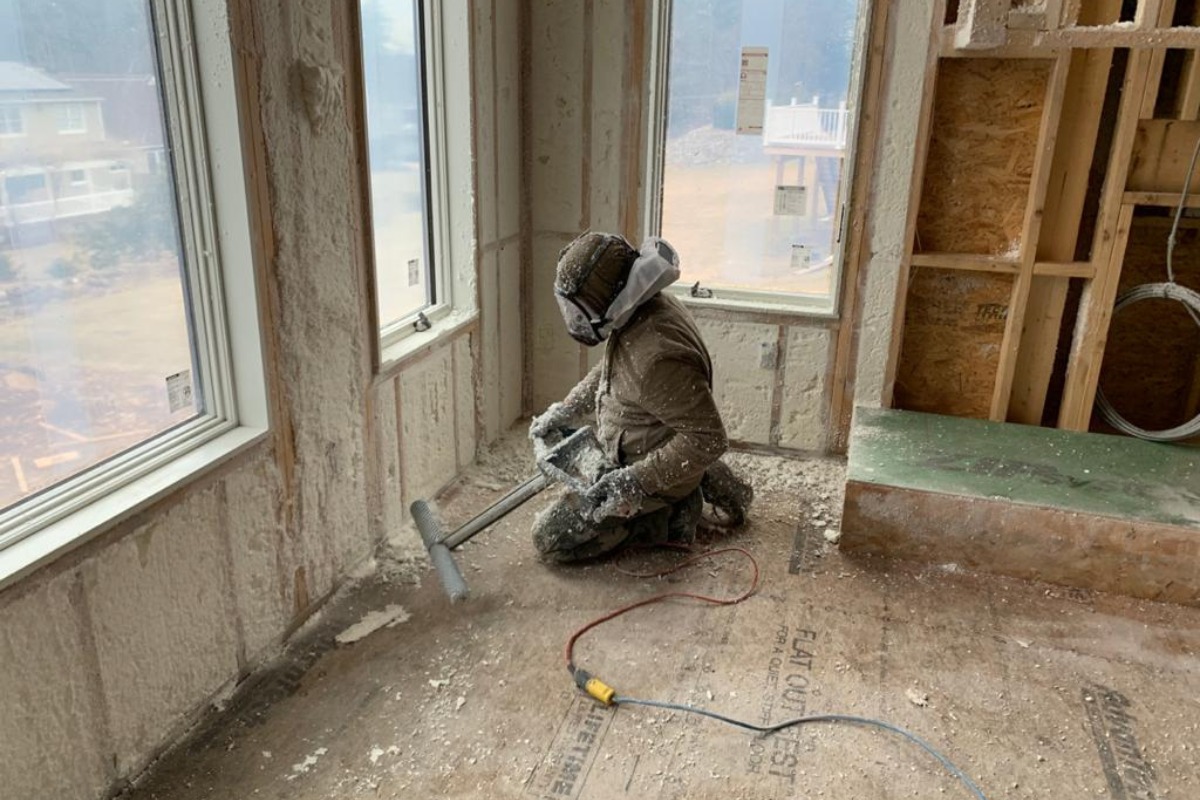
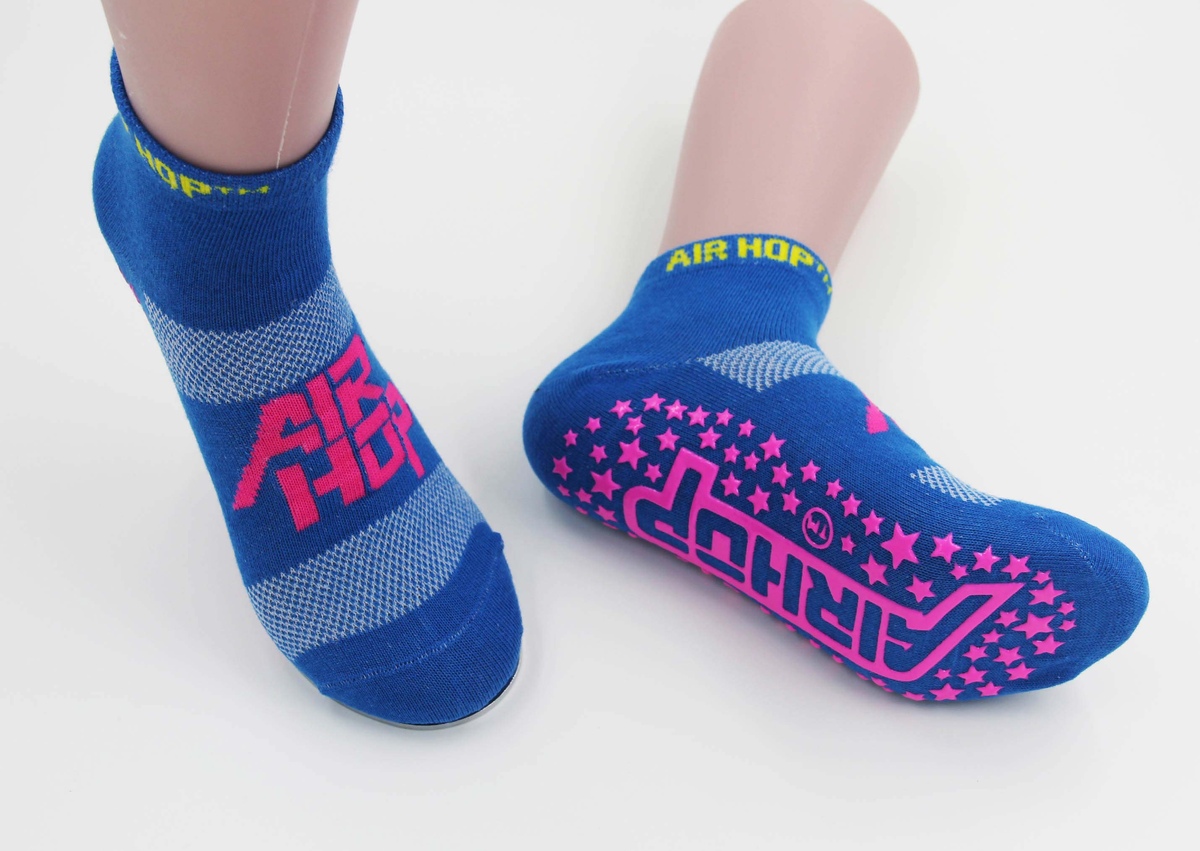

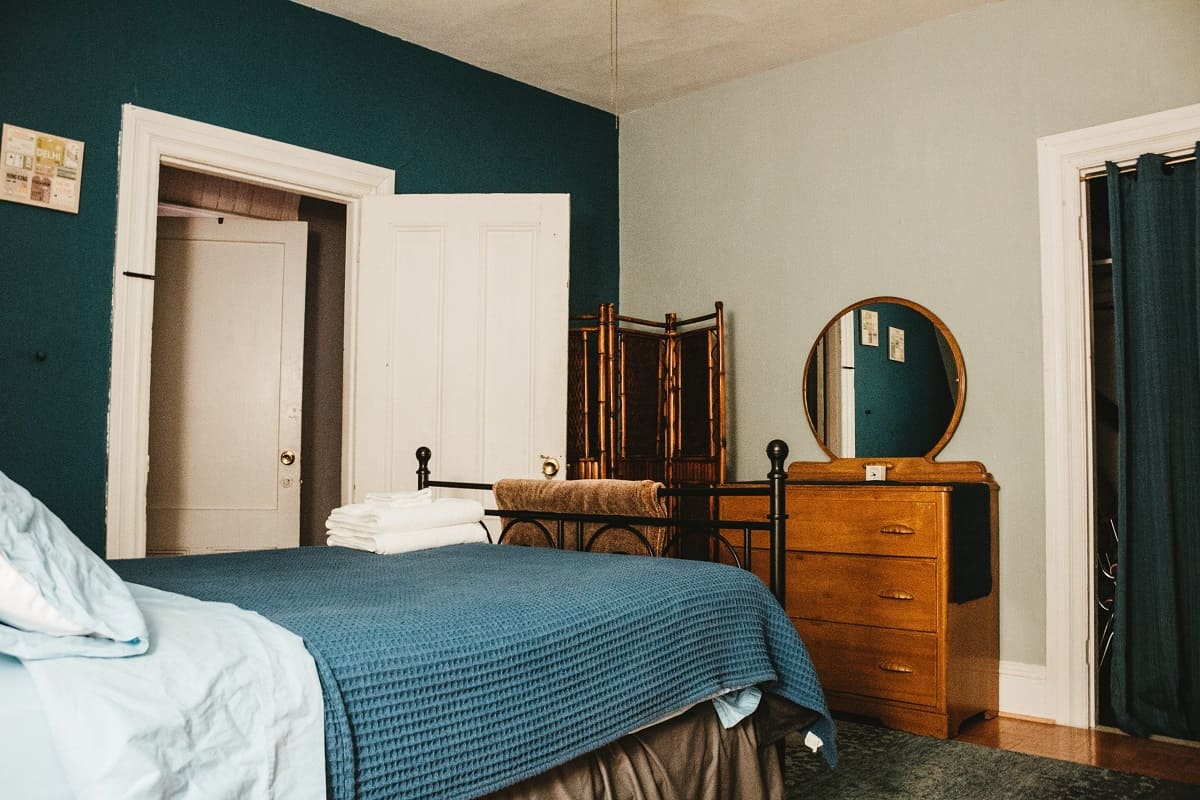
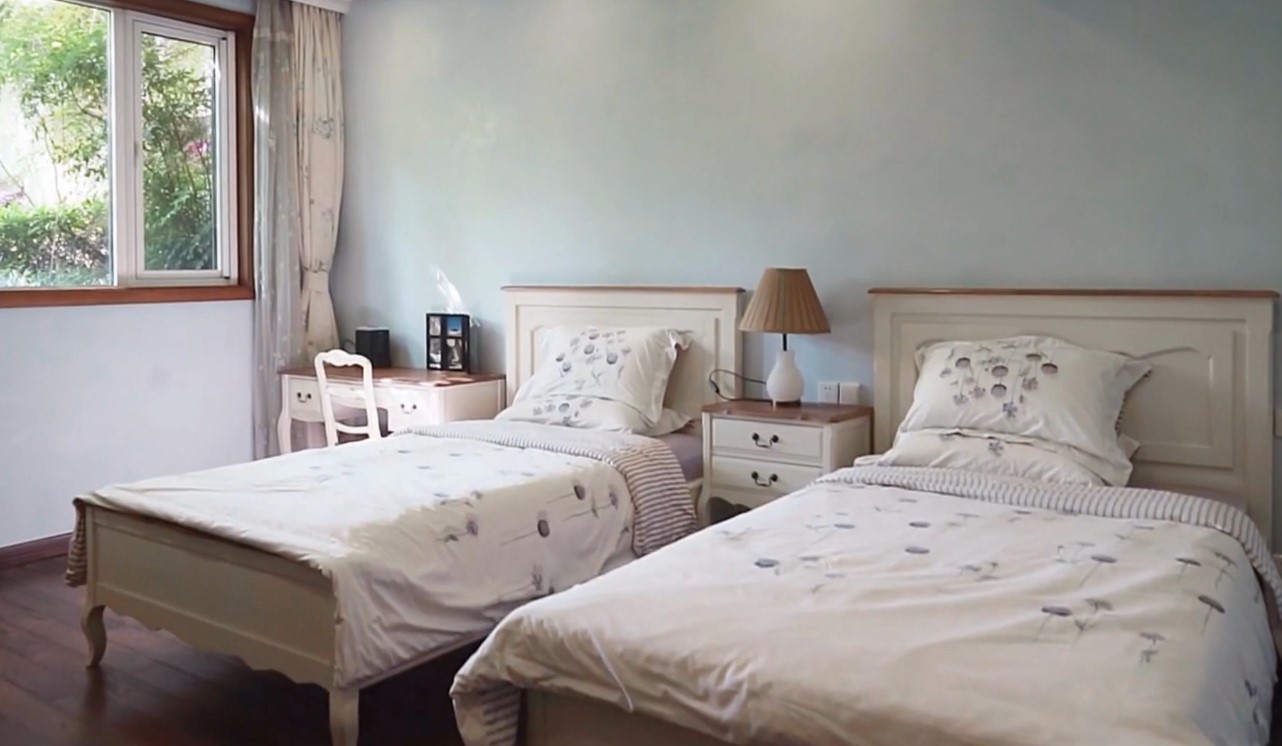

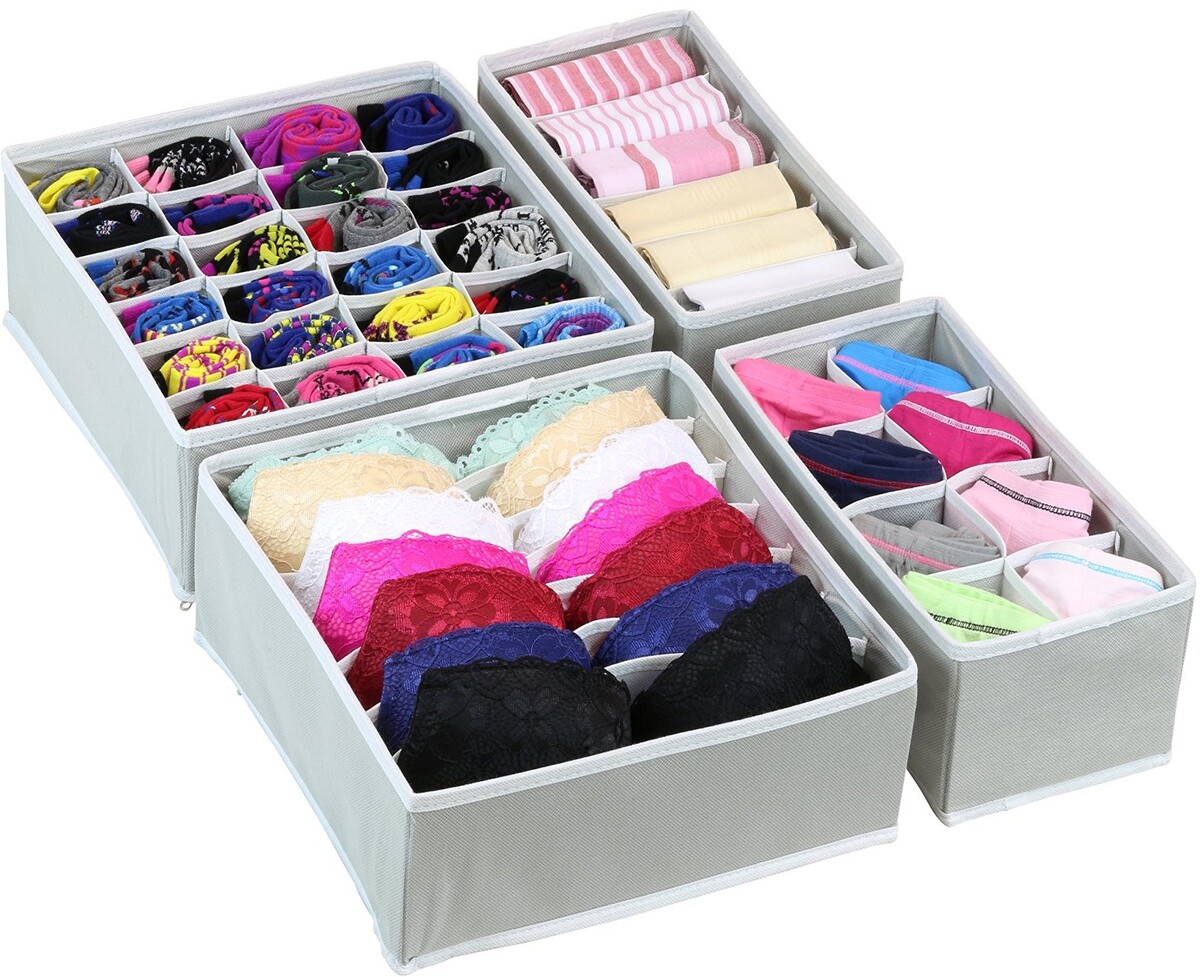



0 thoughts on “Why You Shouldn’t Wear Socks To Bed”